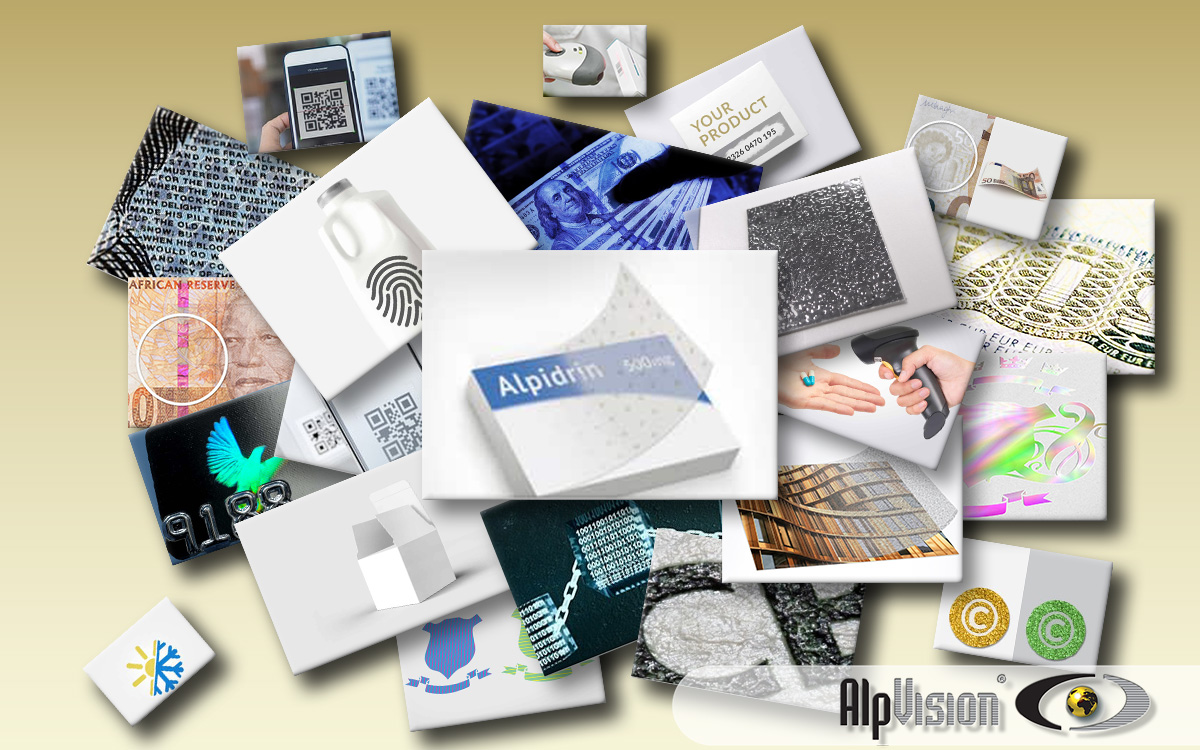When you need to protect your brand, you have several options for anti-counterfeit solutions. But since not every anti-counterfeit technology is as effective as you’d expect, we’ll outline the essentials in this article to provide critical context.
Here’s a look at why the current landscape and how our technology differs from the usual line-up of anti-counterfeit measures.
What are anti-counterfeit solutions?
Simply put, anti-counterfeit solutions are a collection of technologies that brands can deploy to safeguard their products from fraudsters and con artists. The general idea is that you need methods and processes to determine whether an item is genuine or fake. Indeed, fraudulent products that enter the market can be just as convincing as the real thing; counterfeiters go through great lengths to ensure it, especially if only physical anti-counterfeit measures are in place.
As a solution, anti-counterfeit measures make it more difficult for fraudsters and con artists to ply their trade. Not only do they have to forge a product accurately – or forge the certificate of authentication – but they also have to account for these sophisticated protections, which aren’t even visible to the naked eye in some cases. Still, despite the widespread availability of anti-counterfeit solutions, many brands have yet to implement them at the time of this writing.
Common synonyms for anti-counterfeit technologies
Nevertheless, the question as we move forward is this: why haven’t more companies invested resources in new anti-counterfeit measures? The solutions are on the market, yet there’s still hesitation. Why? We believe a significant part of the problem is that anti-counterfeit solutions often go by different names, so here’s a quick list of synonyms you might see as you research technologies online.
Other names for anti-counterfeit solutions include:
- Anti-counterfeit packaging
- Security labels
- Anti-fraud solutions
- Brand verification and protection
- Brand protection solution
- Physical brand protection
Essentially, all of these technologies fall under the category of anti-counterfeit solutions. Now, let’s touch upon why these protections are necessary in the first place.
Why do companies need anti-counterfeit solutions?
At this very moment, counterfeiting remains a problem globally because these products originate overseas before they even ship to consumers. Counterfeiters only have an interest in quick, easy profits, so by putting security measures in place, you can make it far more complex. Criminals lose their revenue stream if they can’t forge products and pass them off as authentic.
Furthermore, the consequences of counterfeit products entering the market can be severe from a brand reputation perspective, which is why a lot of the anti-counterfeiting solutions you’ll find online specify what the solution will protect.
Either way, the concept is still the same, although the difference lies in the technology’s sophistication and effectiveness in the real world.
What are the consequences for brands and consumers?
Without a doubt, brands and consumers suffer from the flood of fake products that keep reaching store shelves, whether it be an online shop or your favorite clothing store. From a brand’s perspective, the greatest risk is that you’ll have to initiate a complete global recall if a fraudulent product is a health and safety risk. The price of a recall can be prohibitive for many companies, so the idea is to invest in safeguards upfront before you have to pay down the line.
But from a consumer’s point of view, buying fake products at full price is a con, and the impact on brand reputation is difficult to measure aside from sales figures and product returns. At the very least, consumers won’t be able to tell whether or not a product is real and may incorrectly assume that the company intentionally manufactures fake items, which isn’t the case. Eventually, the negative perception can cascade into a real problem that’s harder to address the longer you ignore it.
Description
At its core, counterfeit technology implementation is a strategic activity that safeguards a brand’s reputation. It’s essentially a technology investment with a higher return than usual because the solutions are viable and effective. Some technologies require adding quality control processes, while others are nothing more than hard-to-remove labels attached to the packaging.
At a minimum, an effective product counterfeit protection strategy should provide you with capabilities for:
- Authentication
- Tracing and tracking
- Anti-tampering
Furthermore, the difference between anti-counterfeit technologies depends on the manufacturing processes you need to implement before rolling out whatever the solution may be. Typically, among the best anti-counterfeit measures are digital solutions, which include entire software platforms that integrate well with enterprise-grade systems.
Examples of anti-counterfeit measures
Currently, you have no shortage of anti-counterfeit technologies from which to choose. The challenge is selecting the right one for your particular industry, and the honest assessment is that you’ll more than likely need to implement several of them if you have a complex supply chain. Sometimes, the defect can be faulty components that break easily and give the consumers a negative experience; however, it’s still possible to fake entire products provided enough time and resources.
Indeed, far fraudsters and con artists are busy refining their methods, so shouldn’t your brand do the same to keep pace? The answer is a resounding yes, so here’s a list of the currently available anti-counterfeit solutions on the market right now.
The most widely used solutions include protections like:
- Digital watermarks
- Die-cut special shapes for products and packaging
- Fluorescent taggants
- Holograms stickers and glue
- Guilloche printing
- Holographic foils
- Microprinting and micro text
- Optical variable devices (OVD)
- Optical variable ink (OVI)
- Product fingerprints
- Secured QR code authentication
- Raman spectroscopy
- Radiofrequency identification (RFID)
- Security threading
- Thermo-chromatic ink
- Embossing
- Physical watermarks
As you can see, there is no shortage of anti-counterfeit technologies, so what are the basic qualities to look for when deciding which solution may work best for your company?
As a simple rule, the best anti-counterfeit measures differ based on:
- Physical or digital safeguards
- Duplication difficulty
- Anti-forging
- Cost and complexity of the deployment
- Target market
Similarly, you can categorize anti-counterfeit tech as overt, covert, or a combination of the two ends of the spectrum.
State-of-the-art anti-counterfeit solutions from AlpVision
When consumers can’t tell between a genuine item and a forgery, the damage to your brand and the market at large can be significant. One way criminals are circumventing standard protections is to fake the authenticity measures rather than fake an entire product, or they may assemble a fraudulent item after it arrives at its destination, which happens in the U.S. more often than not.
In this light, we developed our anti-counterfeit solutions to protect products at each stage of production and beyond. It’s 360-degree protection, whereas other technologies rely on outdated, easily forgeable methods. Q.R. codes are a great idea, but what happens when no one actually follows the link to verify the product? That’s essentially the problem with today’s anti-counterfeit measures; they rely too much on the user to do the verifying, not the brand.
Thus, our technology includes two versatile yet powerful solutions: Cryptoglyph and AlpVision Fingerprint to solve all of these problems.
Cryptoglyph – Packaging and Label Protection
Cryptoglyph is AlpVision’s digital anti-counterfeiting solution, and the tech works well for packaging and labeling protection. At a high level, the process involves punching thousands of microscopic holes in the varnish layer of labels, packaging, or certificates that counterfeiters can’t easily fake.
When implemented well, our Cryptoglyph solution gives you the ability to scale up counterfeit safeguards and do it at a lower cost. When you combine Cryptoglyph with AlpVision Fingerprint, you can get even more protection, and best of all, the solutions integrate well with enterprise-grade systems.
AlpVision Fingerprint – Physical Products Protection
AlpVision Fingerprint is a solution that identifies counterfeits at the product level, which was once tricky to implement at a low cost. The technology identifies intrinsic defects in the molds for plastic components and compares the products to determine whether or not those same inconsistencies, invisible to the naked eye, exist. If not, the item isn’t authentic.
But when you add both protections in one system, Cryptoglyph and AlpVision Fingerprint, it creates a complete anti-counterfeit solution that makes it significantly harder for criminals to forge items or product components.
So, are you curious about how our anti-counterfeit solutions can work for you? Our experts are standing by to assist you if that’s the case.
If you’d like to learn more details about the backend tech,
download our latest white paper for more information.


